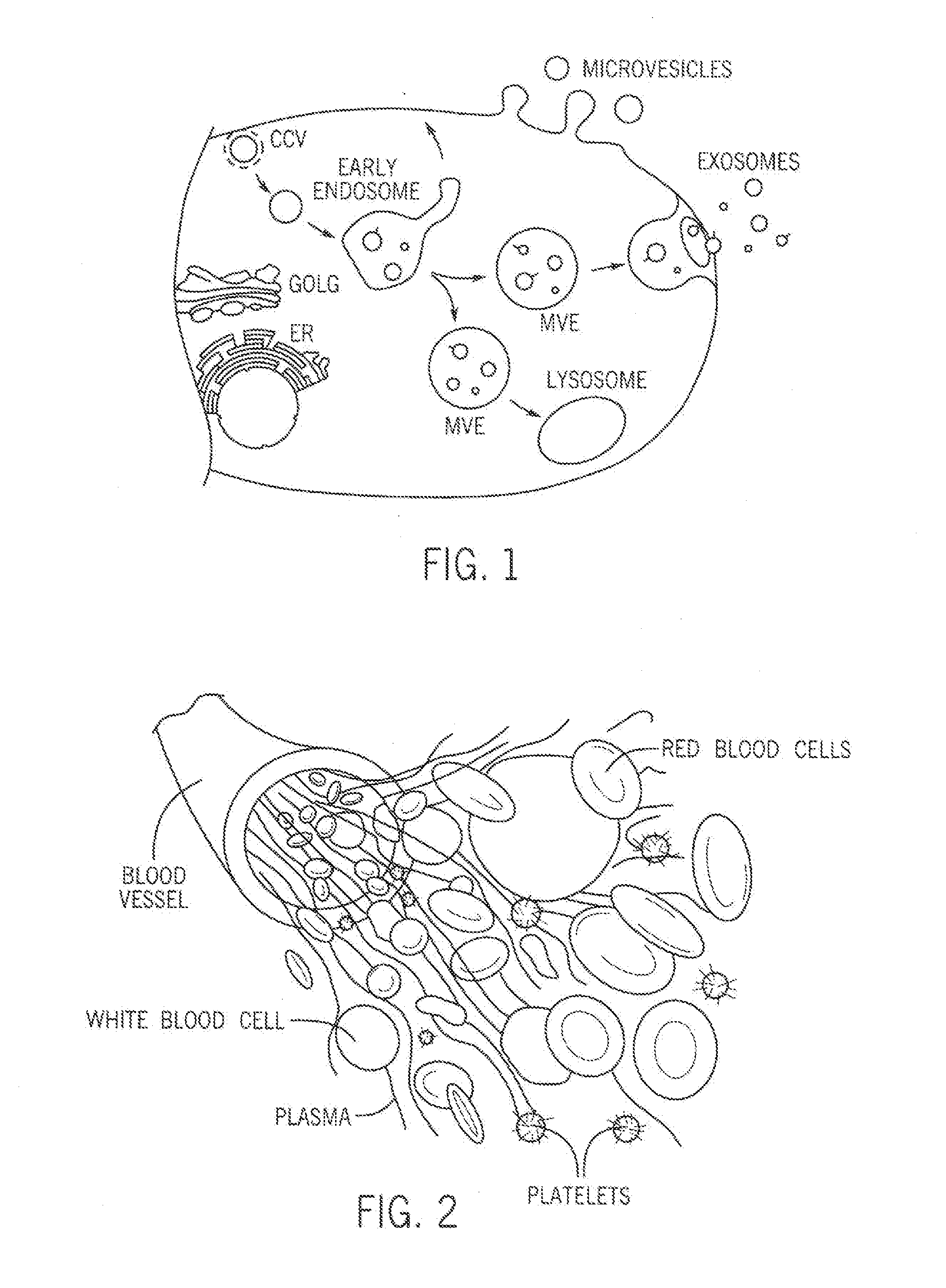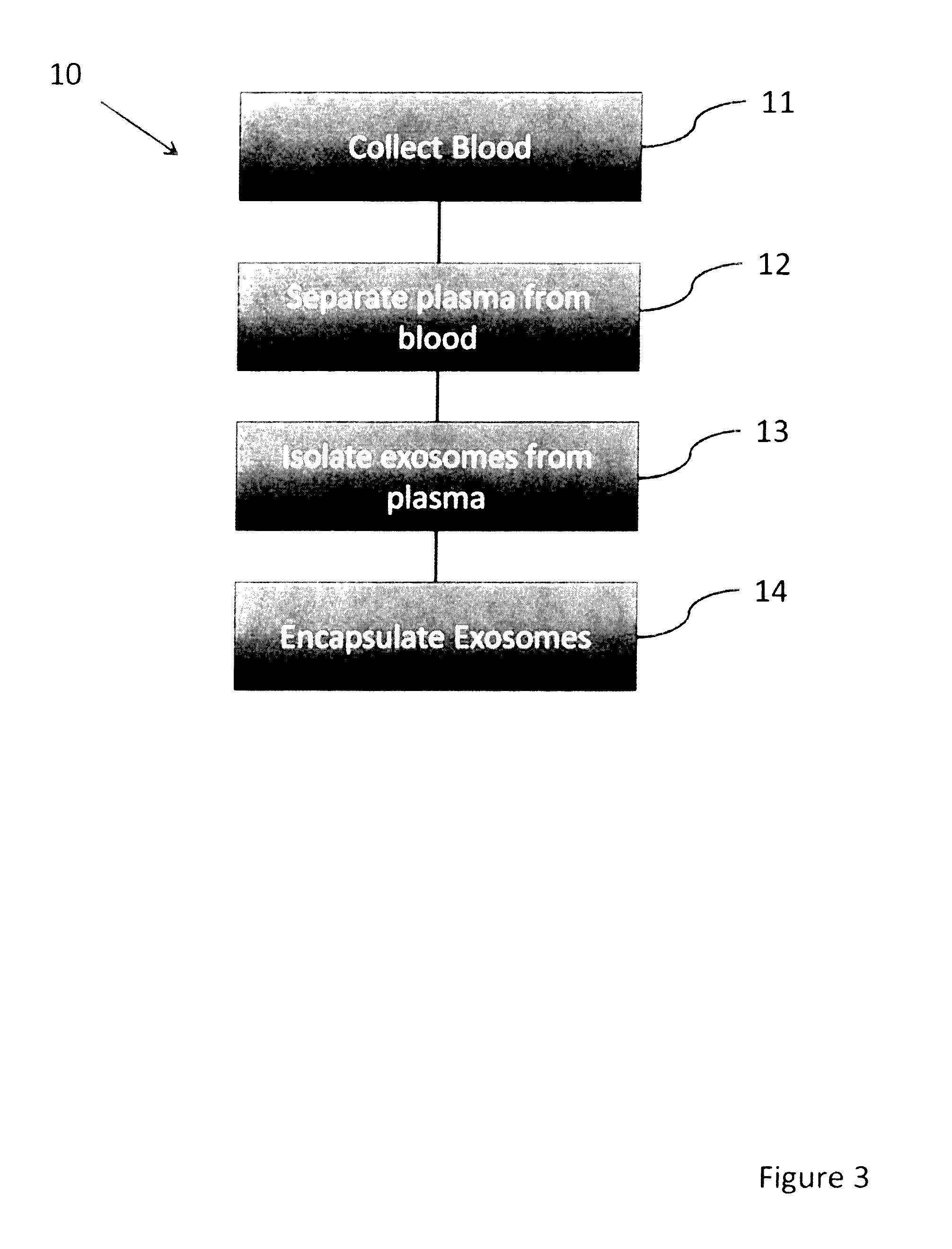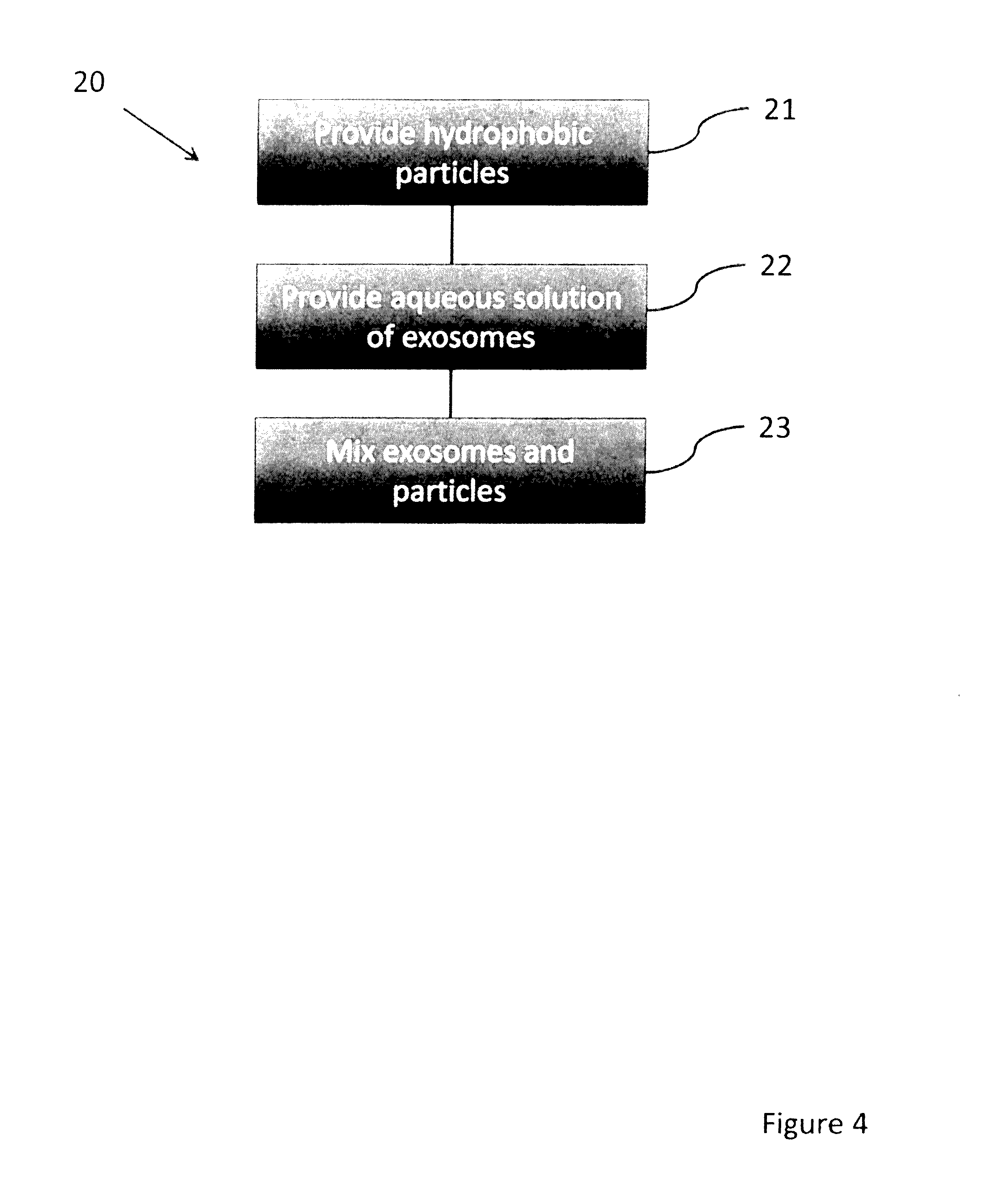Exosome delivery technololgy
a delivery technology and exosome technology, applied in the field of biotechnology systems, apparatuses, compositions and methods, can solve the problems of significant limitations and shortcomings of existing technology in this field, and achieve the effect of improving over the background technology
- Summary
- Abstract
- Description
- Claims
- Application Information
AI Technical Summary
Benefits of technology
Problems solved by technology
Method used
Image
Examples
embodiment a
rocess
[0046]The first method of encapsulating exosomes involves water, using hydrophobic fumed silica to stabilize individual droplets of aqueous solutions. This method is described in U.S. Pat. No. 6,413,548 entitled Particulate Encapsulation of Liquid Beads, assigned to AVEKA, Inc., of Woodbury, Minn. USA. This patent is hereby incorporated by reference. In general the process of making this type of bead involves the itemization of an aqueous solution into a cloud of hydrophobic fumed silica. The silica coats the liquid droplets stabilizing the droplets from coalescence when the droplets are collected. This process has been commercialized for the personal care industry for use as a hair care formulation, but its applicability to exosome encapsulation is heretofore unknown. Typically, the resultant head is 30-100 microns in diameter, 85% aqueous solution, and stable at room temperature, in a closed container for over 2 years.
[0047]One particular embodiment of the sub-steps of this ...
embodiment b
d Process
[0050]Alginates are polysaccharide hydrocolloids that are extracted from seaweed such as the giant kelp macroystis pyrifera. The sodium conjugate base form of alginic acid is water-soluble and forms solid gels in the presence of calcium, aluminum or many other polyvalent cations.
example
[0051]A 1-4 wt % solution of sodium alginate in water is prepared wherein the exosomes are part of the solution and dripping that alginate solution into a second solution of calcium chloride beads are immediately formed that are the shape and size of the droplet that is dripped into the calcium ion bath. By controlling the droplet size, calcium ion concentration, and time in the bath, both the particle size and the release profile of the exosomes from the particle is controlled. A number of samples with different exosome loadings and particle size distributions are produced.
PUM
 Login to View More
Login to View More Abstract
Description
Claims
Application Information
 Login to View More
Login to View More - R&D
- Intellectual Property
- Life Sciences
- Materials
- Tech Scout
- Unparalleled Data Quality
- Higher Quality Content
- 60% Fewer Hallucinations
Browse by: Latest US Patents, China's latest patents, Technical Efficacy Thesaurus, Application Domain, Technology Topic, Popular Technical Reports.
© 2025 PatSnap. All rights reserved.Legal|Privacy policy|Modern Slavery Act Transparency Statement|Sitemap|About US| Contact US: help@patsnap.com



